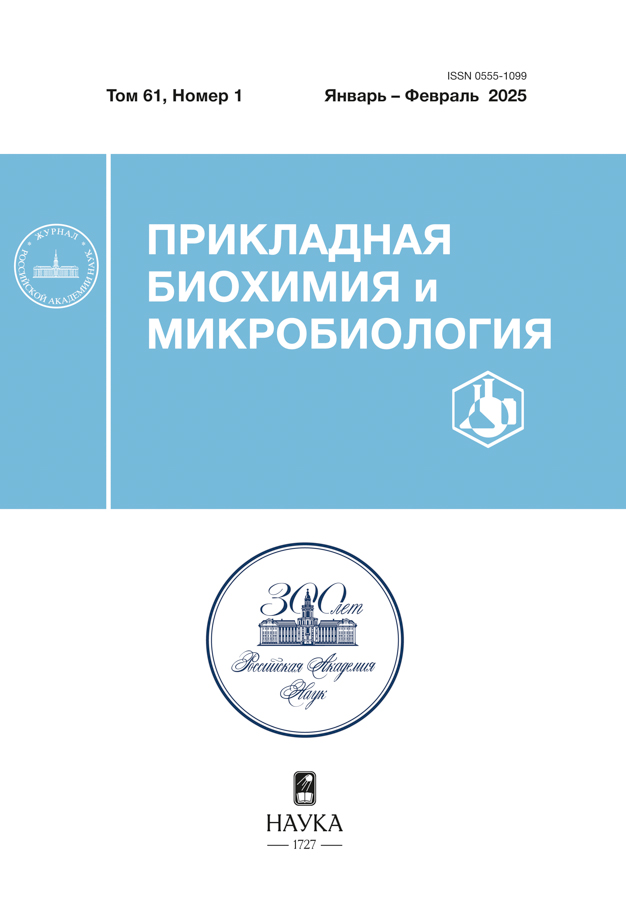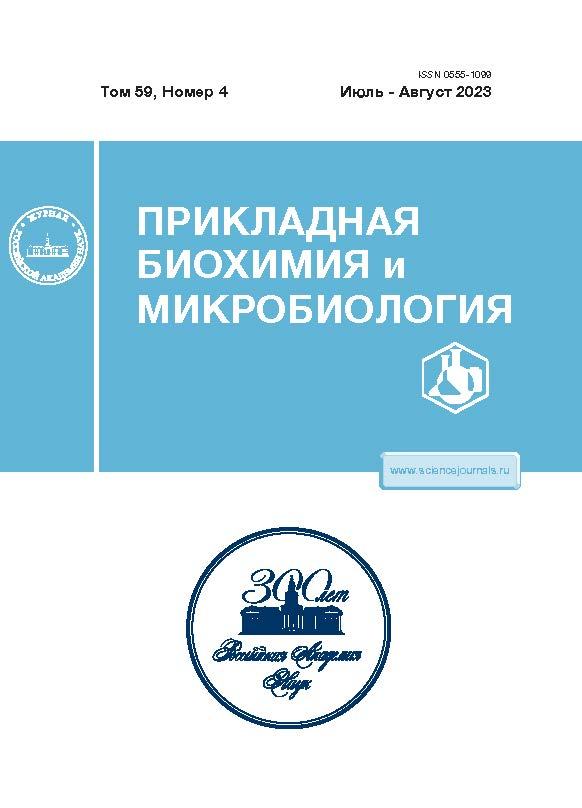Acylated Flavonoids from Cucumis sativus Inhibit Activity of Human Pancreatic Lipase
- Authors: Olennikov D.N.1, Kashchenko N.I.1
-
Affiliations:
- Institute of General and Experimental Biology SD RAS
- Issue: Vol 59, No 4 (2023)
- Pages: 401-409
- Section: Articles
- URL: https://permmedjournal.ru/0555-1099/article/view/674613
- DOI: https://doi.org/10.31857/S0555109923040104
- EDN: https://elibrary.ru/QZMGOJ
- ID: 674613
Cite item
Abstract
Lipid metabolism disorders are a large group of diseases for the treatment of which various strategies are used including the use of pancreatic lipase inhibitors reduced the intake and adsorption of lipids. This study was the first shown that agricultural wastes of cucumber (Cucumis sativus) can be a source of the effective lipase inhibitors. As a result of the chromatographic separation of C. sativus leaves metabolites, seven acylated flavonoids were identified, including three new derivatives of isovitexin characterized by UV, NMR spectroscopy and mass spectrometry data as isovitexin-2"-O-glucoside-6"'-O-ferulate (1), isovitexin-2"-O-glucoside-6"'-O-p-coumarate (2), and isovitexin-2"-O-(6"'-O-feruloyl)-glucoside-6"'-O-ferulate (3). The quantitative HPLC data showed that the total content of the acylated flavonoids in the leaves of Russian varieties C. sativus amounted to 3.78–7.44 mg/g of dry plant weight. Isolated compounds demonstrated the ability to inhibit the human pancreatic lipase and the effectiveness of compound 3 was the greatest and exceeded the activity of the reference compound Orlistat. This study has shown that C. sativus leaves can be the useful source of biologically active phytocomponents with hypolipidemic activity.
About the authors
D. N. Olennikov
Institute of General and Experimental Biology SD RAS
Author for correspondence.
Email: olennikovdn@mail.ru
Russia, 670047, Ulan-Ude
N. I. Kashchenko
Institute of General and Experimental Biology SD RAS
Email: olennikovdn@mail.ru
Russia, 670047, Ulan-Ude
References
- Volkova I.N. // Geograph. Environ. Living Syst. 2021. V. 1. P. 93–109. https://doi.org/10.18384/2712-7621-2021-1-93-109
- Sharipov Sh.I., Ibragimova B.Sh. // Econ. Anal. Theory Pract. 2018. V. 17. P. 1340–1355. https://doi.org/10.24891/ea.17.12.1340
- Седых Т.В., Погребняк С.В. // Вестник ОмГАУ. 2016. № 3. С. 53–58.
- Korottseva I.B., Belov S.N. // Veget. Crops Russ. 2022. V. 6. P. 29–34. https://doi.org/10.18619/2072-9146-2022-6-29-34
- Khan A., Mishra A., Hasan S.M., Usmani A., Ubaid M., Khan N., Saidurrahman M. // J. Complement. Integr. Med. 2022. V. 19. P. 843–854. https://doi.org/10.1515/jcim-2020-0240
- Mukherjee P.K., Nema N.K., Maity N., Sarkar B.K. // Fitoterapia. 2013. V. 84. P. 227–236. https://doi.org/10.1016/j.fitote.2012.10.003
- Olennikov D.N., Kashchenko N.I. // Chem. Nat. Compd. 2023. V. 58. P. 324–329. https://doi.org/10.1007/s10600-022-03858-9
- Lowe M.E. // Ann. Rev. Nutr. 1997. V. 17. P. 141–158. https://doi.org/10.1146/annurev.nutr.17.1.141
- Zhu G., Fang Q., Zhu F., Huang D., Yang C. // Front. Genet. 2021. V. 12. 693538. https://doi.org/10.3389/fgene.2021.693538
- Liu T.-T., Liu X.-T., Chen Q.-X., Shi Y. // Biomed. Pharmacother. 2020. V. 128. 110314. https://doi.org/10.1016/j.biopha.2020.110314
- Li M., Chen Y., Ruan J., Wang W., Chen J., Zhang Q. // Curr. Res. Food. Sci. 2023. V. 6. 100424. https://doi.org/10.1016/j.crfs.2022.100424
- Olennikov D.N., Khandy M.T., Chirikova N.K. // Horticulturae. 2022. V. 8. 975. https://doi.org/10.3390/horticulturae8100975
- Olennikov D.N., Chemposov V.V., Chirikova N.K. // Foods. 2022. V. 11. 2801. https://doi.org/10.3390/foods11182801
- McNally D.J., Wurms K.V., Labbé C., Quideau S., Bélanger R.R. // J. Nat. Prod. 2003. V. 66. P. 1280–1283. https://doi.org/10.1021/np030150y
- Abou-Zaid M.M., Lombardo D.A., Kite G.C., Grayer R.J., Veitch N.C. // Phytochemistry. 2001. V. 58. P. 167–172. https://doi.org/10.1016/s0031-9422(01)00156-x
- Kashchenko N.I., Jafarova G.S., Isaev J.I., Olennikov D.N., Chirikova N.K. // Plants. 2022. V. 11. 2126. https://doi.org/10.3390/plants11162126
- Olennikov D.N., Chirikova N.K. // Chem. Nat. Compd. 2019. V. 55. P. 1032–1038. https://doi.org/10.1007/s10600-019-02887-1
- Olennikov D.N., Kashchenko N.I. // Appl. Biochem. Microbiol. 2023. V. 59. P. 59–67. https://doi.org/10.1134/S0003683823010064
- Olennikov D.N., Kashchenko N.I. // Chem. Nat. Compd. 2020. V. 56. P. 1026–1034. https://doi.org/10.1007/s10600-020-03220-x
- An L., Wang J., Liu Y., Chen T., Xu S., Feng H., Wang X. // Proc. SPIE. 2003. V. 4896. P. 223–231. https://doi.org/10.1117/12.468231
- Insanu M., Zahra A.A., Sabila N., Silviani V., Haniffadli A., Rizaldy D., Fidrianny I. // Maced. J. Med. Sci. 2022. V. 10. P. 616–622. https://doi.org/10.3889/oamjms.2022.8337
- Zhao L., Huang Y., Paglia K., Vaniya A., Wancewicz B., Keller A.A. // Environ. Sci. Technol. 2018. V. 52. P. 7092–7100. https://doi.org/10.1021/acs.est.8b00742
- Custers E.M.E., Kiliaan J.A. // Progr. Lipid Res. 2022. V. 85. 101144. https://doi.org/10.1016/j.plipres.2021.101144
- Rahim A.T.M.A., Takahashi Y., Yamaki K. // Food Res. Int. 2015. V. 75. P. 289–294. https://doi.org/10.1016/j.foodres.2015.05.017
- Buchholz T., Melzig M. // Planta Med. 2015. V. 81. P. 771–783. https://doi.org/10.1055/s-0035-1546173
Supplementary files













